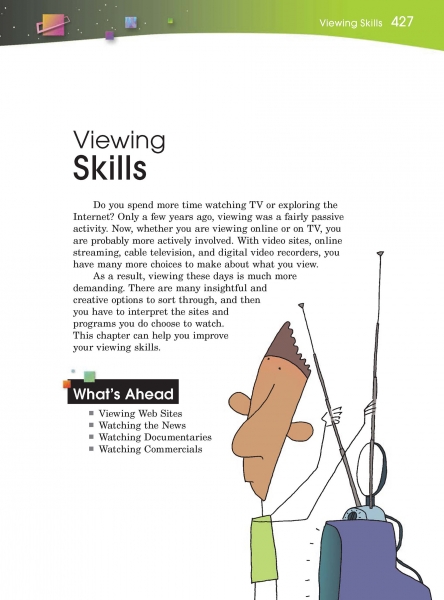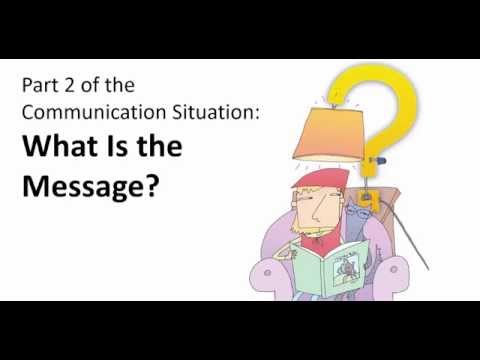Page 427 from

Start-Up Activity
Conduct a poll, asking students how much time they spend looking at screens per day: T.V., smartphone, computer, and so on:
- More than 8 hours
- 4 to 8 hours
- 2 to 4 hours
- Fewer than 2 hours
Then reveal the national averages for 12 to 17 year olds: (1) 26 percent, (2) 31 percent, (3) 20 percent, (4) 23 percent. Compare your students’ results with these averages and lead a discussion about the effect of screen time on teenagers, from entertainment to news, from constant connectivity to sleepless texting. Note how students need to control the screen rather than being controlled by it.
This chapter will help students develop a critical eye for viewing screen media.
Think About It
“Media literacy is not just important; it’s absolutely critical. It’s going to make the difference between whether kids are a tool of the mass media or whether the mass media is a tool for kids to use.”
—Linda Ellerbee

Start-Up Activity
Conduct a poll, asking students how much time they spend looking at screens per day: T.V., smartphone, computer, and so on:
- More than 8 hours
- 4 to 8 hours
- 2 to 4 hours
- Fewer than 2 hours
Then reveal the national averages for 12 to 17 year olds: (1) 26 percent, (2) 31 percent, (3) 20 percent, (4) 23 percent. Compare your students’ results with these averages and lead a discussion about the effect of screen time on teenagers, from entertainment to news, from constant connectivity to sleepless texting. Note how students need to control the screen rather than being controlled by it.
This chapter will help students develop a critical eye for viewing screen media.
Think About It
“Media literacy is not just important; it’s absolutely critical. It’s going to make the difference between whether kids are a tool of the mass media or whether the mass media is a tool for kids to use.”
—Linda Ellerbee



